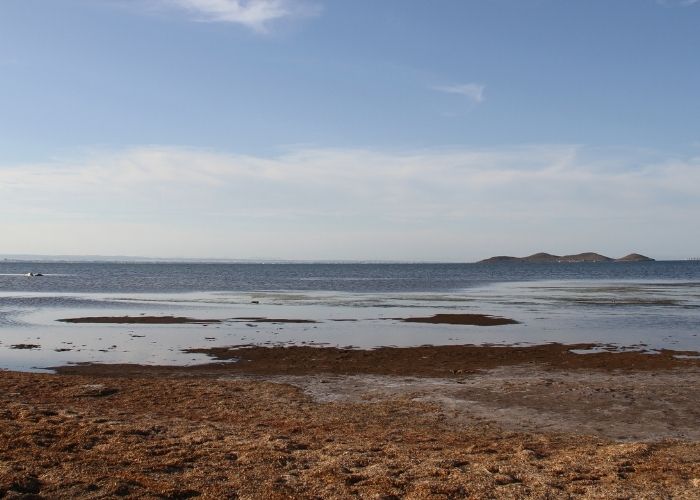MURCIA – Greenpeace sees the water transfer from the Tagus River to the Segura River as the cause of the extreme situation in which Mar Menor finds itself. In recent weeks, five tons of dead fish, shellfish, and crustaceans washed up on the coasts of the inland sea.
The environmental organisation concludes in its report ‘Mar Menor, a victim of the Tajo-Segura transfer’ that it is certain that the ‘continued water transfers have fuelled intensive agriculture and caused the contamination and death of Europe’s largest salt lake. ‘.
According to Greenpeace, data shows the transmission has been fatal to both the transferring basin and the receiving basin. After all, there would be no runoff of polluted water to Mar Menor without the transfer of water from the north to the area. Without that water there would have been far fewer agricultural businesses around Mar Menor.
More than four decades ago, the water transfer from the Tagus River in northern Spain to the Segura River, which supplies the agricultural area in the Murcia region, was a good solution.
Stop shirking responsibilities
However, Greenpeace now wants to see an end to this. The organisation advocates a zero transfer and a reduction in industrial irrigation in Murcia. Greenpeace also states the situation could worsen further if no immediate action is taken. It is “inadmissible” that “after several years of massive fish die-offs, the latest this week” and a demise of the lagoon, the authorities involved in the conservation of the Mar Menor “continue to argue among themselves and take no action”.
“The extra water from the north has brought about an exponential development of intensive and industrial irrigated agriculture. And due to pesticides and the resulting pollution of the water, all this has caused the death of Europe’s largest salt lake.”
5 tons of dead fish and crustaceans
More than 5 tons of dead fish and crustaceans have been found on the shores of the inland sea in the last few weeks. In 2019, during a previous episode of fish kills, two tons fewer dead sea creatures washed ashore.
Crystal clear with flourishing ecosystems
Some of the data put forward by Greenpeace in the report “clearly shows the magnitude of the problem.” In the 1970s irrigation was already starting in the Mar Menor area. But only groundwater that is typical for the area was used. Without the water supply from the Tagus-Segura transfer, the water in Mar Menor was crystal clear with thriving ecosystems.
However, the transfer began in the early 1980s. The irrigated agricultural area increased from 27% to more than 50%. Furthermore, the companies focused almost entirely on grains and citrus fruits. Then between 1988 and 2009, irrigation increased again by nearly 60%.
Every year, about 100 cubic hectometres of water enter Mar Menor from various routes (underground and above ground). And what enters contains at least 1,000 tons of nitrates and 240 tons of phosphonates.
Organic farming
Greenpeace therefore wants to get rid of the irrigated hectares that cannot do without the transfer of the Tagus. Intensive and industrial irrigation must also be drastically reduced. Wells must be monitored and desalination plants owned by small farmers so that they can use them to replace transfer. Futhermore, the number of fertilisers and phytosanitary products in agriculture should also be reduced. Moreover, farms in Murcia should focus on organic farming and grow crops that require little water. In addition, the watertightness of manure ponds and their purification must be improved.


